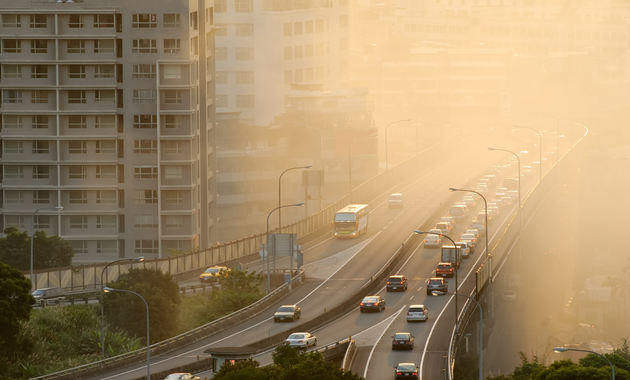What Is Air Pollution?
The addition of any chemical (such as gases), physical (dust particles) or biological (microorganisms such as bacteria and viruses) agent to the atmosphere that deteriorates the health of the air is termed as Air Pollution. Some of the common causes of air pollution are dust (most common), vehicular pollution, industrial pollution, wood burning, agricultural pollution (stubble burning).
What Is PM2.5?
Particulate matter or PM, also known as Particle pollution, comprise of solid and liquid particles. These are usually made up of ash, diesel exhaust, chemicals and metals.
Particulate matter are further classified in two types:
–PM2.5, readily and easily inhalable particles, are approximately 1/30th of the average human hair that can lodge deep inside the lungs.
-They serve as carriers for several harmful chemicals that are harmful for human lungs. Light in weight, they go deeper into the lungs and stay for a longer duration, causing greater harm to the lungs.
-PM2.5 have been found to effect the respiratory system (accumulate in the lungs), cardiovascular system (causes toxicity and irritation to the nervous system regulating the heart muscles), blood system (blood toxicity and triggers heart disease) and the reproductive system (placental blood toxicity).
-The common sources of these particles are combustion from power-plants, motor vehicles and wood burning.
What Is PM10?
-PM10, are coarse particles sized between (2.5-10 micrometers), causing less severe effects compared to PM2.5.
-These particles consist of smoke, dirt and dust from farming, roads and factories.
-The common sources of these particles are grinding and crushing of rocks.
When Can You Say That The Air Is Polluted?
-The quality of the air is evaluated using the Air Quality Index (AQI), which defines the health impact of various pollutants such as NO2, CO, SO2 and other gaseous contaminants specifically with regard to the Indian conditions.
-As per the Indian AQI System, the pollution levels are graded good to severe across a varied range of PM2.5 and PM10levels.
-The air quality is termed Good (PM2.5 0-30; PM10 0-50), Poor (PM2.5 91-120; PM10 251-350) and Severe (PM2.5 exceeding 250; PM10 exceeding 430).
Whom Does Air Pollution Affect The Most?
Although everyone of us is being adversely affected by air pollution, some people are more likely to be affected by air pollution, especially when exposed over a prolonged time span. These include:
-People with asthma (closely 15-20 million people in India) and other respiratory diseases are likely to suffer adversely during these days. Contaminated air serves as a trigger for asthma attacks.
-People with cardiovascular (heart) disease are likely to get symptoms such as palpitations, chest pain or shortness of breath during high pollution levels.
–Unborn babies (Pregnant women) when exposed to high levels of air pollution over longer time periods ( weeks to months) may be linked to adverse pregnancy outcomes such as reduced birth weight or preterm birth.
–Children are most vulnerable to hazards of air pollution because their lungs are still growing and developing. Also, children breathe more frequently than adults therefore increasing the risk of inhaling contaminated air.
–Older adults generally have weaker immune systems, or undiagnosed respiratory or cardiovascular health conditions.
So, go ahead and make sure you stay indoors during early hours, take precautions and keep yourself and your family safe when the AQI levels are poor or severely bad. Stay Healthy, Stay Happy!
